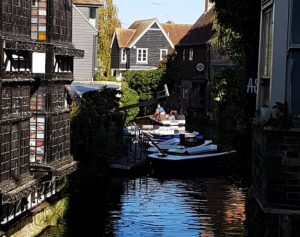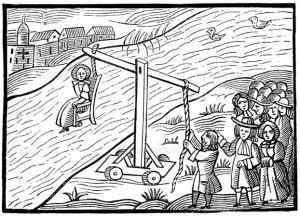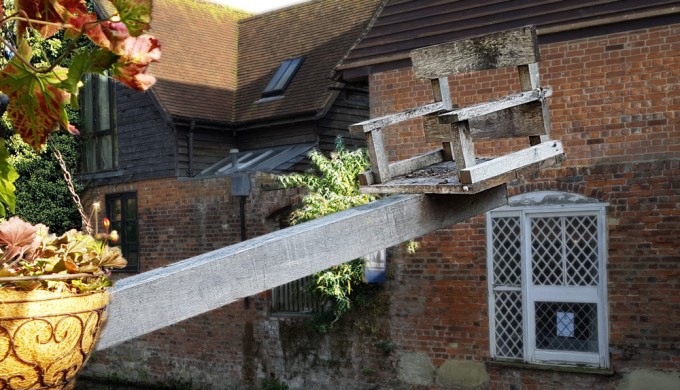Earlier this term I gave a talk to two local History societies about witchcraft in Tudor and Stuart Canterbury and Kent. While I was searching for some arresting images for the PowerPoint presentation, I came across a lot of references on the web to the Canterbury ducking stool being used to detect witches in the 16th and 17th centuries. The idea being that if the accused floated they were guilty and if they sank they were innocent. Since I have never come across a reference in the historical sources to a ducking stool being used in Canterbury for ‘swimming’ witches, I was rather dubious. So I consulted the experts at Canterbury Archaeological Trust. I was pleased when they gave me the highly technical results of their evaluation and told me this was ‘nonsense’. 
‘Swimming’ accused witches was a custom that was more commonly used in the North of England rather than the South, although ducking stools were used across England in the Tudor and Stuart eras for punishing scolds and other unruly persons. Sometimes the stool was simply put outside someone’s house to humiliate them, without any further action being taken. This next image from the 17th century shows a ducking stool on wheels that was clearly intended to be moved from site to site.

Canterbury’s ducking stool is most likely a late Victorian or Edwardian mock up and not the original item. This also seems to be the case with the ducking stool on the river at Fordwich, which has been described as part of a crane used to unload barges. Canterbury’s stool can be seen from the bridge over the Stour at the Old Weavers’ House in Canterbury’s High Street and if there are any other examples of ducking stools in Kent, do let us know. Any authentic references to suspected witches being ducked in Canterbury are also welcome!
 Centre for Kent History and Heritage
Centre for Kent History and Heritage Jackie Eales
Jackie Eales 26894
26894



Hi,
I’m really interested in learning more on any history of witchcraft in Canterbury and Kent.
Could you recommend any reliable sources to start with?
Kind regards,
George
I recommend Malcolm Gaskill’s essay ‘Witchcraft and witchcraft prosecutions, 1560-1660’ in Michael Zell’s edited collection, Early Modern Kent, 1540-1640 which was published by Boydell in 2000. There is also an essay by Karen Jones and Michael Zell, “The divels speciall instruments” : women and witchcraft before the “great witch hunt” in Social History [London] Volume 30: 1 (2005) pages 45-63 ISSN/ISBN:0307-1022,